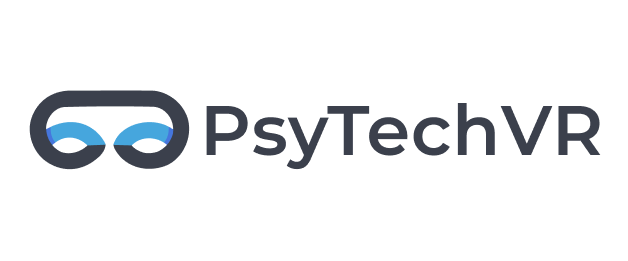Blog - VRET
Overcoming Enochlophobia:
Conquer Your Fear Of Crowds
By Inna Maltzeva, Clinical Research Specialist
May 15, 2025
When in a crowded environment, especially ones that we are not familiar with, our body’s natural response is to become more alert and aware instinctively. This specific reaction is more innate than deliberate, as it is deeply rooted in survival. Most of the time, our brain begins to assess the scene to detect any potential threat, activating the body’s sympathetic nervous system, which is otherwise known as the “fight or flight” response.
When in a rally or protest, for example, your eyes begin to scan for exits, and you become alert and ready to react if needed. You might also notice an increase in heart rate, respiration, or a mild sense of tension - all of which are completely normal, as it is our system’s way of staying vigilant and prepared.
For most people, these sensations of fear begin to fade away and even get replaced with excitement as they adjust and get comfortable with being in crowded places. However, for certain individuals, these same sensations grow stronger with time, causing them to experience overwhelming anxiety and physical distress, which ultimately may develop into enochlophobia.
As we continue in this article, we will be taking a comprehensive look at the concept of enochlophobia, reviewing its causes, symptoms, and the various innovative means through which it can be managed and overcome, especially with Virtual Reality Exposure Therapy (VRET). So, if you have the fear of crowds (enochlophobia) or you are in search of insights on this condition, this guide would equip you with all the information you need.
When in a rally or protest, for example, your eyes begin to scan for exits, and you become alert and ready to react if needed. You might also notice an increase in heart rate, respiration, or a mild sense of tension - all of which are completely normal, as it is our system’s way of staying vigilant and prepared.
For most people, these sensations of fear begin to fade away and even get replaced with excitement as they adjust and get comfortable with being in crowded places. However, for certain individuals, these same sensations grow stronger with time, causing them to experience overwhelming anxiety and physical distress, which ultimately may develop into enochlophobia.
As we continue in this article, we will be taking a comprehensive look at the concept of enochlophobia, reviewing its causes, symptoms, and the various innovative means through which it can be managed and overcome, especially with Virtual Reality Exposure Therapy (VRET). So, if you have the fear of crowds (enochlophobia) or you are in search of insights on this condition, this guide would equip you with all the information you need.

Exploring The Fear Of Crowds And Why It Develops
As mentioned earlier, the fear of crowds is a natural instinct that is based on survival and, as a result, is not always regarded to be irrational. Being in a crowded environment has a way of naturally reducing an individual’s sense of safety and control, which can make even the calmest individual feel uneasy. It is, however, when this discomfort becomes intense, recurring, or begins to affect the individual’s daily life that it might signal the occurrence of something deeper, such as enochlophobia.
The fear of a crowd, in most cases, does not occur instantly but rather gradually and subtly. For a certain category of individuals, this fear begins as a result of a specific traumatic experience, such as being trapped in a highly populated area, getting injured in the middle of a fear-driven crowd, or even witnessing a violent event that occurred in a crowd. Traumatic events like this are capable of leaving a major emotional impact on an individual, which creates a strong association between crowds and danger. This is essentially why some individuals, over time, begin to react defensively to any similar environment, even when there is no threat to defend against.
For other people, the fear of crowds might begin to occur as a side effect of different anxiety disorders, such as agoraphobia, social anxiety, or panic disorder. For this set of individuals, their fear of crowds often reflects the need for them to overcome their struggle with control, vulnerability, or unpredictability.
There is also the impact of cultural and social influences on the development of this fear in people. Individuals who were brought up in environments where public spaces were generally considered unsafe or those who have read several news stories about crowd-related violence and disasters may strongly internalize the belief system that being in a crowd is dangerous.
An adequate knowledge of these reasons helps us to understand that while this type of fear is instinctive, it is not random. The fear of the crowd has roots, and with the right type of intervention, it can be managed and overcome.
The fear of a crowd, in most cases, does not occur instantly but rather gradually and subtly. For a certain category of individuals, this fear begins as a result of a specific traumatic experience, such as being trapped in a highly populated area, getting injured in the middle of a fear-driven crowd, or even witnessing a violent event that occurred in a crowd. Traumatic events like this are capable of leaving a major emotional impact on an individual, which creates a strong association between crowds and danger. This is essentially why some individuals, over time, begin to react defensively to any similar environment, even when there is no threat to defend against.
For other people, the fear of crowds might begin to occur as a side effect of different anxiety disorders, such as agoraphobia, social anxiety, or panic disorder. For this set of individuals, their fear of crowds often reflects the need for them to overcome their struggle with control, vulnerability, or unpredictability.
There is also the impact of cultural and social influences on the development of this fear in people. Individuals who were brought up in environments where public spaces were generally considered unsafe or those who have read several news stories about crowd-related violence and disasters may strongly internalize the belief system that being in a crowd is dangerous.
An adequate knowledge of these reasons helps us to understand that while this type of fear is instinctive, it is not random. The fear of the crowd has roots, and with the right type of intervention, it can be managed and overcome.

Defining Enochlophobia: Understanding Crowd-Related Anxiety
Enochlophobia (which is sometimes referred to as demophobia) can be described as an intense or overwhelming fear of crowds or heavily populated areas. Unlike the natural discomfort that we have previously explained, the effects of this type of fear go beyond unease, and it triggers severe anxiety symptoms, one of which includes an urgent need to escape the crowded environment.
One peculiar thing that sets this type of fear apart is that the reaction/response of the affected subject to this fear is not always directly linked to the real danger. Instead, the subject’s fear response is dependent on how threatening the brain perceives the crowd to be.
Individuals with enochlophobia are generally known to avoid public places and events such as malls, concerts, public transportation, and social gatherings – all in a bid to prevent themselves from feeling trapped or vulnerable. This avoidance, in many cases, begins to interfere with their daily life, limiting both their productivity and ability to freely enjoy all the good that life has to offer.
One peculiar thing that sets this type of fear apart is that the reaction/response of the affected subject to this fear is not always directly linked to the real danger. Instead, the subject’s fear response is dependent on how threatening the brain perceives the crowd to be.
Individuals with enochlophobia are generally known to avoid public places and events such as malls, concerts, public transportation, and social gatherings – all in a bid to prevent themselves from feeling trapped or vulnerable. This avoidance, in many cases, begins to interfere with their daily life, limiting both their productivity and ability to freely enjoy all the good that life has to offer.

Underlying Causes And Key Risk Factors
As of today, there is no exact known cause for enochlophobia. This is mainly because the mode through which this condition develops in individuals varies and is dependent on several unique factors. However, several contributing factors have been researched to influence the development of enochlophobia.
In this section, we will be looking into some of these factors as well as the types of individuals who may be more susceptible to developing this phobia.
Hypersensitivity and Sensory Overload
Crowded environments are typically known to be loud, fast-moving, and often filled with unpredictable stimuli. This setting could be a problem for individuals who are naturally sensitive to sound, motion, or touch, as the overstimulation derived from being in crowded spaces can result in them having a rush of stress responses. What happens is that their nervous system gets overwhelmed, and their body starts to interpret the environment as danger, creating an urgent need for them to escape. Repeated exposures to these kinds of uncomfortable sensations can, over time, cause an individual to completely avoid crowded places – thereby strengthening the development of enochlophobia.
Traumatic Experiences
Traumatic events are researched to be one of the most common causes why individuals develop enochlophobia. A good example of this type of event would be being hurt in a stampede or getting lost/separated in a very large crowd. It's important to note that these experiences do not necessarily have to cause physical harm to make an impact that results in fear responses. Witnessing a crowd-related traumatic experience alone is enough to condition the brain to associate crowds with danger, causing it to trigger anxiety and fear responses in similar environments, even when there is no actual threat present.
Pre-existing Mental Health Conditions
The fear of crowds can develop in certain individuals as a result of their psychological challenges. Mental health conditions such as social anxiety disorder, agoraphobia, panic disorder, and PTSD are likely to cause the people affected by them to have an increased sensitivity to crowded places. For instance, an individual with panic disorder may dread the possibility of experiencing an episode in a public space so much that they avoid being in public or crowded spaces completely, which develops or further reinforces enochlophobia.
Environmental Conditioning and Learned Behavior
In some cases, the fear of crowds can be passed down from other individuals. An individual raised in an environment where crowds are believed to be dangerous and unpredictable may, may overtime, absorb this belief system as their own. Most of the time, this belief system grows passively in individuals, and it gradually creates an innate fear of crowds as they go through life.
In this section, we will be looking into some of these factors as well as the types of individuals who may be more susceptible to developing this phobia.
Hypersensitivity and Sensory Overload
Crowded environments are typically known to be loud, fast-moving, and often filled with unpredictable stimuli. This setting could be a problem for individuals who are naturally sensitive to sound, motion, or touch, as the overstimulation derived from being in crowded spaces can result in them having a rush of stress responses. What happens is that their nervous system gets overwhelmed, and their body starts to interpret the environment as danger, creating an urgent need for them to escape. Repeated exposures to these kinds of uncomfortable sensations can, over time, cause an individual to completely avoid crowded places – thereby strengthening the development of enochlophobia.
Traumatic Experiences
Traumatic events are researched to be one of the most common causes why individuals develop enochlophobia. A good example of this type of event would be being hurt in a stampede or getting lost/separated in a very large crowd. It's important to note that these experiences do not necessarily have to cause physical harm to make an impact that results in fear responses. Witnessing a crowd-related traumatic experience alone is enough to condition the brain to associate crowds with danger, causing it to trigger anxiety and fear responses in similar environments, even when there is no actual threat present.
Pre-existing Mental Health Conditions
The fear of crowds can develop in certain individuals as a result of their psychological challenges. Mental health conditions such as social anxiety disorder, agoraphobia, panic disorder, and PTSD are likely to cause the people affected by them to have an increased sensitivity to crowded places. For instance, an individual with panic disorder may dread the possibility of experiencing an episode in a public space so much that they avoid being in public or crowded spaces completely, which develops or further reinforces enochlophobia.
Environmental Conditioning and Learned Behavior
In some cases, the fear of crowds can be passed down from other individuals. An individual raised in an environment where crowds are believed to be dangerous and unpredictable may, may overtime, absorb this belief system as their own. Most of the time, this belief system grows passively in individuals, and it gradually creates an innate fear of crowds as they go through life.

Situations That Commonly Trigger Enochlophobia
For individuals who are struggling with enochlophobia, it is not every crowd setting that feels the same or triggers the same fear response. It is important to understand that enochlophobia is not just about the presence of many people, but rather about how that environment makes them feel mentally, physically, and emotionally. Several scenarios are known to trigger more crowd-related anxiety than others, and in this section, we will explore some of them.
Densely Populated Public Places
This refers to public spaces such as elevators, movie theaters, shopping malls, concerts, and festivals, where the number of people present is usually high. The populace of the individuals present, the movement, and the noise that typically accompany these locations can quickly overwhelm an individual with enochlophobia.
Public Enclosed Spaces
Public enclosed spaces that are typically filled with people, such as elevators, movie theaters, or crowded classrooms, can also trigger the fear of crowds in individuals. The primary reasons why these kinds of spaces create fear in most individuals are because of their limited escape options- take a filled elevator, for example.
Events And Large Gatherings
Being involved in an event that requires long-standing or staying in groups, such as parades or religious gatherings, can create the sense of being trapped and exposed to danger. For certain individuals, what fuels their distress in these settings is the anticipation of sudden surges, loud outbursts, and chaotic exits that may not actually occur.
Densely Populated Public Places
This refers to public spaces such as elevators, movie theaters, shopping malls, concerts, and festivals, where the number of people present is usually high. The populace of the individuals present, the movement, and the noise that typically accompany these locations can quickly overwhelm an individual with enochlophobia.
Public Enclosed Spaces
Public enclosed spaces that are typically filled with people, such as elevators, movie theaters, or crowded classrooms, can also trigger the fear of crowds in individuals. The primary reasons why these kinds of spaces create fear in most individuals are because of their limited escape options- take a filled elevator, for example.
Events And Large Gatherings
Being involved in an event that requires long-standing or staying in groups, such as parades or religious gatherings, can create the sense of being trapped and exposed to danger. For certain individuals, what fuels their distress in these settings is the anticipation of sudden surges, loud outbursts, and chaotic exits that may not actually occur.

Waiting Lines And Queues
It is possible that an act as simple as standing in a line or queue can sometimes feel uncomfortable for certain individuals. This is especially when they feel surrounded on all sides or when the movement is too slow/ unpredictable, and tension sets in, followed by an urgent desire to flee.
It is worth noting that the way enochlophobia is triggered in different individuals varies based on several factors. However, the common thread between every enochlophobia-triggering situation is that it instills a perceived loss of safety and control in individuals.
It is possible that an act as simple as standing in a line or queue can sometimes feel uncomfortable for certain individuals. This is especially when they feel surrounded on all sides or when the movement is too slow/ unpredictable, and tension sets in, followed by an urgent desire to flee.
It is worth noting that the way enochlophobia is triggered in different individuals varies based on several factors. However, the common thread between every enochlophobia-triggering situation is that it instills a perceived loss of safety and control in individuals.
How Enochlophobia Connects With Other Mental Health Issues
Enochlophobia does not occur in individuals as a stand-alone condition. In most cases, the fear of crowds overlaps with many mental health conditions and collectively manifests as a complex mix of emotional and psychological challenges. This, of course, makes the diagnostic process more difficult as the symptoms of a particular disorder may mask or even intensify the symptoms of another mental health issue. However, an adequate understanding of how these mental issues connect is vital in creating an effective enochlophobia treatment plan. That being said, let’s look into some of these overlaps.
One of the most common conditions that overlaps with enochlophobia is social anxiety disorder. While social anxiety is primarily rooted in the fear of judgment or embarrassment, being in a crowded setting can amplify the fear response as a result of the number of people present. When in a large group, for example, an individual with social anxiety might experience a heightened level of self-consciousness or develop the fear of scrutiny, both of which make the anxiety feel much more overwhelming.
Panic disorders are another interesting condition to consider. Some individuals with panic disorders dread being in crowded places because they are afraid of having a panic attack in a space where they won’t be able to easily escape or find help. Additionally, the unpredictability and sensory overload that come with being in a crowded space can serve as a strong trigger for panic episodes.
Enochlophobia also overlaps with agoraphobia in terms of symptoms and triggers. Agoraphobia is the fear of being in situations where escape might be difficult, especially in public and crowded settings.
One of the most common conditions that overlaps with enochlophobia is social anxiety disorder. While social anxiety is primarily rooted in the fear of judgment or embarrassment, being in a crowded setting can amplify the fear response as a result of the number of people present. When in a large group, for example, an individual with social anxiety might experience a heightened level of self-consciousness or develop the fear of scrutiny, both of which make the anxiety feel much more overwhelming.
Panic disorders are another interesting condition to consider. Some individuals with panic disorders dread being in crowded places because they are afraid of having a panic attack in a space where they won’t be able to easily escape or find help. Additionally, the unpredictability and sensory overload that come with being in a crowded space can serve as a strong trigger for panic episodes.
Enochlophobia also overlaps with agoraphobia in terms of symptoms and triggers. Agoraphobia is the fear of being in situations where escape might be difficult, especially in public and crowded settings.

Now, while it is not every individual with agoraphobia who fears a crowd specifically, the loss of perceived control and escape options within a crowd, seen in enochlophobia, might resemble the distress that is also seen in agoraphobia. As a result, a person with agoraphobia may avoid crowded environments not just because of the number of individuals present, but because the settings create a certain sense of entrapment. In cases where both of these conditions are diagnosed in an individual, the subject’s fear response can be expected to become heightened as both phobias will reinforce themselves.
There is also the occurrence of PTSD as an after-effect of enochlophobia. This happens in a few cases, particularly when the fear is a result of a traumatic experience that involved large groups. For example, someone who has experienced a stampede, public violence, or even got lost in a crowd as a child may later develop deep-rooted anxiety when found in similar environments.
There is also the occurrence of PTSD as an after-effect of enochlophobia. This happens in a few cases, particularly when the fear is a result of a traumatic experience that involved large groups. For example, someone who has experienced a stampede, public violence, or even got lost in a crowd as a child may later develop deep-rooted anxiety when found in similar environments.
How To Spot The Signs Of Enochlophobia
As we have mentioned before, enochlophobia goes far beyond the natural discomfort that is typically experienced when in crowded environments. This phobia often manifests a pattern of emotional, psychological, and even physical symptoms that are capable of interfering with an individual’s life. It is the proper recognition of these symptoms that brings us a step closer towards managing and overcoming enochlophobia.
In this section, we will review some of the common indicators that are researched to suggest that an individual is struggling with enochlophobia.
In this section, we will review some of the common indicators that are researched to suggest that an individual is struggling with enochlophobia.
Typical Emotional And Physical Reactions
For individuals with enochlophobia, being in a crowded environment can trigger an immediate wave of emotional discomfort, which may manifest in several ways. The first emotional tell-sign is a sudden, overwhelming sense of fear, which may eventually escalate into a panic attack depending on the crowd situation or how long the individual was in that environment. Another sign of emotional discomfort could be a strong desire to escape, even when the crowd does not pose an actual threat, just to feel safe. Then there is also the common feelings of anxiety that people experience when in a crowd or simply from anticipating being in one.
On the other hand, the physical symptoms given off by enochlophobic individuals are often associated with the body’s sympathetic nervous system. These symptoms include a rapid heartbeat, trembling or shaking as a result of the adrenaline surging through the system, increased sweating, nausea, chest tightness, or dizziness. In some severe cases, a triggered enochlophobic individual can feel disoriented, lightheaded, or on the verge of losing consciousness.
Over time, these physical and emotional responses can become very deeply rooted and might result in the development of avoidance behaviors and increased sensitivity to even less crowded settings.
On the other hand, the physical symptoms given off by enochlophobic individuals are often associated with the body’s sympathetic nervous system. These symptoms include a rapid heartbeat, trembling or shaking as a result of the adrenaline surging through the system, increased sweating, nausea, chest tightness, or dizziness. In some severe cases, a triggered enochlophobic individual can feel disoriented, lightheaded, or on the verge of losing consciousness.
Over time, these physical and emotional responses can become very deeply rooted and might result in the development of avoidance behaviors and increased sensitivity to even less crowded settings.

Effects Of Enochlophobia On Everyday Activities
The effects of enochlophobia are not just limited to the duration of time spent in a crowd alone. When left untreated over time, enochlophobia can develop to affect almost every part of one’s daily life by gradually reshaping the way such an individual interacts with the world. In this section, we will be going over some specific ways through which this condition can disrupt a person’s normal activities and limit their sense of independence.
Avoidance Of Crowded Public Spaces
Individuals with enochlophobia always make it a point to steer clear away from locations such as malls, train stations, concerts, or busy streets, because of the large number of individuals that are typically found there. This avoidance can lead to several logistical issues where they experience difficulty commuting or miss important appointments, especially when the more direct route involves going through a crowded space.
Furthermore, this avoidance disrupts their routine, as most individuals with this phobia have to plan to run their errands at odd hours when the crowd can be avoided, and this may not always be predictable or convenient.
Strained Social Life
Enochlophobia individuals, as a result of their fear, tend to decline invitations to attend social events that involve the presence of a crowd, such as weddings, family gatherings, religious services, or even birthdays. This makes them, in some cases, despite their best attempts to back out of meaningful relationships, which leads to loneliness and reduced emotional support.
Limited Career Opportunities
For an enochlophobia individual, jobs that require teamwork, travel, public speaking, or the attendance of large conferences can start to feel overwhelming and impossible to carry out. Over time, this condition can restrict an individual’s career growth, result in missed promotions, or even lead to job loss.
Emotional & Psychological Toll
The persistent and intense fear of what might happen when encountering a crowd can cause an enochlophobic individual to constantly be in a state of worry, hypervigilance, and emotional fatigue. This heightened state can also eventually contribute to an individual’s general outlook on life, possibly leading to depression, low self-confidence, or a sense of helplessness.
Reduced Quality Of Life
When the fear of crowds begins to shape our everyday decisions, such as determining whether or not to attend an event, for example, then it narrows one’s life experiences. Eventually, an individual with enochlophobia realizes that his/her life is no longer about fulfillment or enjoyment but is rather now centered about safety, and this leads to dissatisfaction and a reduced sense of personal freedom.
Avoidance Of Crowded Public Spaces
Individuals with enochlophobia always make it a point to steer clear away from locations such as malls, train stations, concerts, or busy streets, because of the large number of individuals that are typically found there. This avoidance can lead to several logistical issues where they experience difficulty commuting or miss important appointments, especially when the more direct route involves going through a crowded space.
Furthermore, this avoidance disrupts their routine, as most individuals with this phobia have to plan to run their errands at odd hours when the crowd can be avoided, and this may not always be predictable or convenient.
Strained Social Life
Enochlophobia individuals, as a result of their fear, tend to decline invitations to attend social events that involve the presence of a crowd, such as weddings, family gatherings, religious services, or even birthdays. This makes them, in some cases, despite their best attempts to back out of meaningful relationships, which leads to loneliness and reduced emotional support.
Limited Career Opportunities
For an enochlophobia individual, jobs that require teamwork, travel, public speaking, or the attendance of large conferences can start to feel overwhelming and impossible to carry out. Over time, this condition can restrict an individual’s career growth, result in missed promotions, or even lead to job loss.
Emotional & Psychological Toll
The persistent and intense fear of what might happen when encountering a crowd can cause an enochlophobic individual to constantly be in a state of worry, hypervigilance, and emotional fatigue. This heightened state can also eventually contribute to an individual’s general outlook on life, possibly leading to depression, low self-confidence, or a sense of helplessness.
Reduced Quality Of Life
When the fear of crowds begins to shape our everyday decisions, such as determining whether or not to attend an event, for example, then it narrows one’s life experiences. Eventually, an individual with enochlophobia realizes that his/her life is no longer about fulfillment or enjoyment but is rather now centered about safety, and this leads to dissatisfaction and a reduced sense of personal freedom.

Initial Indicators And Subtle Warning Signs
Enochlophobia, just like many other specific disorders, does not always present itself suddenly or dramatically. In most cases, the early signs of this phobia are often very subtle and are easily dismissed as unimportant. The proper identification of these signs is very crucial as it can help us to proactively address the phobia before it begins to significantly distort our routine and life.
As we progress, we will review some of these early signs that can help inform us when enochlophobia is developing in an individual.
As we progress, we will review some of these early signs that can help inform us when enochlophobia is developing in an individual.
- Discomfort in Moderately Crowded Spaces: A very clear warning sign of enochlophobia is when an individual begins to feel uneasy or get easily irritable in small-sized crowded areas such as elevators, classrooms, or waiting rooms.
- Routine Changes: A change in routine is also an indicator for enochlophobia, especially ones that help them work their way around crowded settings. For example, choosing to run errands during off-peak hours when the environment is less busy, or changing routes to work to avoid densely crowded areas.
- Physical Tension and Restlessness: This refers to the physical and noticeable symptoms that usually accompany enochlophobia. They include increased muscle tension, sweating, or pacing around when in public spaces together with multiple people.
- Avoidance of Social Activities: It is a strong indicator of enochlophobia when an individual suddenly starts declining invitations to events or fails to show up for normal social gatherings with no clear and logical reason.
- Subtle Escape Behaviors: It is also not far-fetched to suspect enochlophobia in an individual who you have observed to be always standing near exits or staying close to walls when in public or crowded places. You can also enquire whether or not such an individual was mentally planning quick exit plans while in that environment.
How Different Crowd Settings Can Trigger A Response
For individuals with enochlophobia, the intensity of their fear response when in a crowd is highly dependent on the type of crowd setting. This is primarily because not all types of crowds are experienced the same way due to the variability of the environment’s perceived level of control, possibility of escape, and predictability. Let’s explore different crowd settings and how they trigger fear responses.
Enclosed Spaces
Enclosed public environments such as elevators, trains, or waiting rooms are known to typically inspire a heightened feeling of entrapment. When surrounded by people in a confined space with limited exits, a lot of enochlophobic individuals tend to feel trapped and vulnerable to danger. Different factors, such as the lack of ventilation, personal space, and limited mobility, can greatly escalate this anxiety or trigger a panic response, which could manifest as tachycardia (increased heartbeat), dizziness, chest pain, etc.
Enclosed Spaces
Enclosed public environments such as elevators, trains, or waiting rooms are known to typically inspire a heightened feeling of entrapment. When surrounded by people in a confined space with limited exits, a lot of enochlophobic individuals tend to feel trapped and vulnerable to danger. Different factors, such as the lack of ventilation, personal space, and limited mobility, can greatly escalate this anxiety or trigger a panic response, which could manifest as tachycardia (increased heartbeat), dizziness, chest pain, etc.

Large Open Gatherings
Large open gatherings are regarded as the most chaotic and hardest crowd settings to predict. Common examples of events in this category include concerts, rallies, sporting events, or protests. The loud noise and the jostling movement that usually occur in these events can easily overwhelm an individual with enochlophobia.
For a lot of individuals, even the thought of being in such an environment can stir up anticipatory anxiety, let alone the perceived difficulty of leaving the crowd quickly in the event of an emergency, which typically causes or amplifies distress.
Large open gatherings are regarded as the most chaotic and hardest crowd settings to predict. Common examples of events in this category include concerts, rallies, sporting events, or protests. The loud noise and the jostling movement that usually occur in these events can easily overwhelm an individual with enochlophobia.
For a lot of individuals, even the thought of being in such an environment can stir up anticipatory anxiety, let alone the perceived difficulty of leaving the crowd quickly in the event of an emergency, which typically causes or amplifies distress.

Routine Scenarios
It is remarkable how much of our daily activities are normally spent in public spaces. Routine activities such as getting groceries at the mall or having lectures in a filled classroom can feel very threatening to an individual with enochlophobia. What especially makes this type of crowd setting so distressing is that they are harder to avoid, as many of these activities are essential for our survival and growth. Typically, attempts made to avoid these routine scenarios lead to social withdrawal and logistical issues for enochlophobic individuals.
It is remarkable how much of our daily activities are normally spent in public spaces. Routine activities such as getting groceries at the mall or having lectures in a filled classroom can feel very threatening to an individual with enochlophobia. What especially makes this type of crowd setting so distressing is that they are harder to avoid, as many of these activities are essential for our survival and growth. Typically, attempts made to avoid these routine scenarios lead to social withdrawal and logistical issues for enochlophobic individuals.
Getting Help For Enochlophobia: Therapy Paths
Having discussed how much enochlophobia can reduce the quality of life for those it affects, let’s explore the different ways through which it can be treated.
Enochlophobia, like many other specific phobias, can be effectively managed and overcome with the right therapeutic intervention. However, a lot of individuals living with this condition still struggle in silence, choosing to hide their fear rather than seeking the help they need. Many of them strive to minimize their symptoms or avoid talking about their condition altogether due to the fear of embarrassment, being misunderstood, or the possibility of their experience being taken lightly. The truth is, enochlophobia is a real psychological condition, and those affected by it require all the support they can get.
In this section, we will be looking closely into how and when to seek professional mental help, the kinds of therapies that serve as effective forms of enochlophobia treatment, and how they help those affected to take active control of their lives again, especially in crowded settings.
Enochlophobia, like many other specific phobias, can be effectively managed and overcome with the right therapeutic intervention. However, a lot of individuals living with this condition still struggle in silence, choosing to hide their fear rather than seeking the help they need. Many of them strive to minimize their symptoms or avoid talking about their condition altogether due to the fear of embarrassment, being misunderstood, or the possibility of their experience being taken lightly. The truth is, enochlophobia is a real psychological condition, and those affected by it require all the support they can get.
In this section, we will be looking closely into how and when to seek professional mental help, the kinds of therapies that serve as effective forms of enochlophobia treatment, and how they help those affected to take active control of their lives again, especially in crowded settings.
When And Why To Seek Professional Mental Health Support
Knowing the right time to seek mental health support for enochlophobia can be very challenging, especially when the fear has developed and is now part of your daily life. Many enochlophobic individuals get by for several years without ever fully realizing the negative impact the condition is having on their mental and emotional well-being. Most time happens to people who have successfully modified their routine to effectively avoid crowds. However, if the intensity of your fear of crowds is consistently affecting your ability to work, socialize, or even run simple errands, then it might just be the right time to seek professional support.
Another strong indicator that should signal the need to seek help is when the coping methods being used (e.g, breathing techniques) are no longer effective in keeping the intense anxiety at bay.
Unlike what most people think, the impact of mental health support goes beyond just providing temporary fixes. Professional therapists are trained to help people with mental fears like enochlophobia identify their hidden triggers, address the underlying cause, such as trauma or a pre-existing disorder, and then create tailored strategies to help them effectively manage their fear.
It is important to note that seeking help for enochlophobia does not mean that your fear is irrational or exaggerated. In fact, the earlier enochlophobia support is sought, the higher the chances of the subject regaining the confidence to overcome his/her fear and beginning to live freely.
Another strong indicator that should signal the need to seek help is when the coping methods being used (e.g, breathing techniques) are no longer effective in keeping the intense anxiety at bay.
Unlike what most people think, the impact of mental health support goes beyond just providing temporary fixes. Professional therapists are trained to help people with mental fears like enochlophobia identify their hidden triggers, address the underlying cause, such as trauma or a pre-existing disorder, and then create tailored strategies to help them effectively manage their fear.
It is important to note that seeking help for enochlophobia does not mean that your fear is irrational or exaggerated. In fact, the earlier enochlophobia support is sought, the higher the chances of the subject regaining the confidence to overcome his/her fear and beginning to live freely.
Therapies Used To Treat Enochlophobia
In treating enochlophobia, the main objective of all the psychological interventions utilized is to address both the individual’s emotional response to crowds and the thought patterns that actually sustain that fear. While the right approach for tackling this condition may vary from person to person, therapy remains one of the most effective methods with the highest record of success. Let’s look at some of the most commonly used forms of therapy.

Cognitive Behavioral Therapy (CBT) Techniques
Cognitive Behavioral Therapy (CBT) is one of the most widely used therapeutic approaches for treating enochlophobia. The goal of this approach is to help affected individuals identify and then challenge the negative thoughts in their minds, which fuel their fear of crowds. Common examples of this kind of thought are the prediction of catastrophic events happening to them, such as being crushed or trapped with no open exit.
Now, the way CBT sessions work is that the therapist works together with the individual to replace these distorted thoughts with more realistic and balanced thoughts, which instills calmness. For an individual, for example, who has always assumed that all crowds are unsafe, CBT sessions can help train the person’s mind to learn to evaluate every situation or environment based on the actual risks and the available coping resources. Let’s run through some of the techniques used in CBT.
Psychoeducation
Psychoeducation is one of the first CBT techniques used in the treatment of enochlophobia. As the name implies, this technique involves helping individuals with enochlophobia to understand the nature of their condition and the psychological mechanisms behind their fear. Psychoeducation serves as an avenue for individuals to gain insight into their symptoms and behavioral patterns, equipping them to challenge their irrational thoughts and reduce the shame they might have initially felt about their reactions. Additionally, the understanding this technique provides individuals helps them to have an increased commitment to the therapeutic process and a stronger sense of self-efficacy in managing enochlophobia.
Cognitive Rehearsal
This strategy involves a process where the therapist mentally walks an individual through a crowd-related scenario while applying coping techniques like identifying escape routes in advance or positive self-talk. The individual walks through each step in their mind, planning what to expect, how to react, and which coping tools to use. Not only does this exercise help enochlophobic individuals to build confidence over time, but it also helps to reduce their anticipatory fear.
Relaxation Training
This form of training is taught to help individuals with enochlophobia manage the intense physical symptoms of anxiety that often arise in crowded environments. Techniques such as deep breathing and progressive muscle relaxation help to reduce tension and promote a sense of calm by counteracting the fight-or-flight reaction. For an individual with enochlophobia, the regular practice of these skills, especially in anxiety-provoking situations, can help to significantly decrease the severity of panic symptoms while simultaneously increasing their sense of control.
Self-Monitoring And Thought Logs
This strategy simply involves recording details of the specific moments when the crowd-related anxiety arises. Details such as where they were, who they were with, and what thought was running through their mind during their most distressing moments can help an enochlophobic individual to recognize the patterns and triggers that contribute to their anxiety.
Consequently, this helps them to become more aware of their negative or distorted thinking. It also helps enochlophobic individuals to challenge these irrational thoughts by examining the evidence for and against them – an exercise that ultimately helps to reframe their cognitive responses.
Now, the way CBT sessions work is that the therapist works together with the individual to replace these distorted thoughts with more realistic and balanced thoughts, which instills calmness. For an individual, for example, who has always assumed that all crowds are unsafe, CBT sessions can help train the person’s mind to learn to evaluate every situation or environment based on the actual risks and the available coping resources. Let’s run through some of the techniques used in CBT.
Psychoeducation
Psychoeducation is one of the first CBT techniques used in the treatment of enochlophobia. As the name implies, this technique involves helping individuals with enochlophobia to understand the nature of their condition and the psychological mechanisms behind their fear. Psychoeducation serves as an avenue for individuals to gain insight into their symptoms and behavioral patterns, equipping them to challenge their irrational thoughts and reduce the shame they might have initially felt about their reactions. Additionally, the understanding this technique provides individuals helps them to have an increased commitment to the therapeutic process and a stronger sense of self-efficacy in managing enochlophobia.
Cognitive Rehearsal
This strategy involves a process where the therapist mentally walks an individual through a crowd-related scenario while applying coping techniques like identifying escape routes in advance or positive self-talk. The individual walks through each step in their mind, planning what to expect, how to react, and which coping tools to use. Not only does this exercise help enochlophobic individuals to build confidence over time, but it also helps to reduce their anticipatory fear.
Relaxation Training
This form of training is taught to help individuals with enochlophobia manage the intense physical symptoms of anxiety that often arise in crowded environments. Techniques such as deep breathing and progressive muscle relaxation help to reduce tension and promote a sense of calm by counteracting the fight-or-flight reaction. For an individual with enochlophobia, the regular practice of these skills, especially in anxiety-provoking situations, can help to significantly decrease the severity of panic symptoms while simultaneously increasing their sense of control.
Self-Monitoring And Thought Logs
This strategy simply involves recording details of the specific moments when the crowd-related anxiety arises. Details such as where they were, who they were with, and what thought was running through their mind during their most distressing moments can help an enochlophobic individual to recognize the patterns and triggers that contribute to their anxiety.
Consequently, this helps them to become more aware of their negative or distorted thinking. It also helps enochlophobic individuals to challenge these irrational thoughts by examining the evidence for and against them – an exercise that ultimately helps to reframe their cognitive responses.
Gradual Exposure Through Controlled Scenarios
Gradual exposure, which is also referred to as systematic desensitization, can be described as a therapeutic approach that involves a process where individuals confront and progressively learn to manage their fears in a safe and controlled environment. For individuals with enochlophobia, this process typically starts with exposure to less-intimidating scenarios involving crowds. As therapeutic progress is being made at each level, the subjects are introduced to another crowd-related scenario, which is more challenging than the last one.

For instance, an individual with enochlophobia may start by imagining him/herself being in a crowded setting. Once this stage is overcome, the individual then progresses to standing near a crowd and then eventually works up to spending time in the middle of a crowd. To prevent sensory overload, all the scenario levels used in this approach are carefully tailored to suit the individual’s comfort level.
The goal of this entire process is to help desensitize individuals to the anxiety stimulus they feel when in a crowd, allowing them to gradually face their fears while practicing coping strategies such as mindfulness to manage their anxiety.
The goal of this entire process is to help desensitize individuals to the anxiety stimulus they feel when in a crowd, allowing them to gradually face their fears while practicing coping strategies such as mindfulness to manage their anxiety.
How Long Does Treatment Take, And What To Expect
The duration of treatment for enochlophobia varies among different individuals and can last anywhere between a few weeks to several months, depending on the severity of the condition, the individual’s progress, and the therapeutic approach used.
Generally, in the initial stages of enochlophobia treatment, individuals are typically tasked to engage in regular therapy sessions once or twice a week. These sessions are mostly focused on understanding the fears, identifying the individual’s triggers, and choosing effective coping strategies. The therapist would then help to create a hierarchy of tailored fear-inducing scenarios and then introduce gradual exposure exercises. This initial stage may take a few weeks as the individual might take some time to get comfortable with the therapeutic process and start to confront less-intimidating scenarios.
In the middle stage, as the person gradually progresses through exposure therapy, they will keep being exposed to increasingly challenging situations. At this stage, the therapist monitors their client’s progress closely and may have to adjust the exposures if needed to ensure both their safety and effectiveness. This phase can last anywhere from a period of a few weeks to a couple of months, depending on how well the individual handles the exposure and their commitment to the process.
The final stages of enochlophobia treatment typically involve the exposure of the individual to the actual world. By this stage, most individuals should begin to notice a significant reduction in their anxiety levels. This phase may also involve a mix of follow-up sessions, which help to reinforce the already-learned techniques to ensure the sustenance of progress.
Throughout the treatment, individuals can expect to experience moments of discomfort when they face their fear. However, it is important to understand and bear in mind that these moments are a natural part of the healing process and that the ultimate goal of overcoming their fear gets closer as they progress through every scenario.
Generally, in the initial stages of enochlophobia treatment, individuals are typically tasked to engage in regular therapy sessions once or twice a week. These sessions are mostly focused on understanding the fears, identifying the individual’s triggers, and choosing effective coping strategies. The therapist would then help to create a hierarchy of tailored fear-inducing scenarios and then introduce gradual exposure exercises. This initial stage may take a few weeks as the individual might take some time to get comfortable with the therapeutic process and start to confront less-intimidating scenarios.
In the middle stage, as the person gradually progresses through exposure therapy, they will keep being exposed to increasingly challenging situations. At this stage, the therapist monitors their client’s progress closely and may have to adjust the exposures if needed to ensure both their safety and effectiveness. This phase can last anywhere from a period of a few weeks to a couple of months, depending on how well the individual handles the exposure and their commitment to the process.
The final stages of enochlophobia treatment typically involve the exposure of the individual to the actual world. By this stage, most individuals should begin to notice a significant reduction in their anxiety levels. This phase may also involve a mix of follow-up sessions, which help to reinforce the already-learned techniques to ensure the sustenance of progress.
Throughout the treatment, individuals can expect to experience moments of discomfort when they face their fear. However, it is important to understand and bear in mind that these moments are a natural part of the healing process and that the ultimate goal of overcoming their fear gets closer as they progress through every scenario.
Choosing A Qualified Therapist Or Specialist
Selecting the right therapist is a very crucial step for treating enochlophobia, and it can be challenging if you don’t know what to look out for. As a result of both the emotional and behavioral components of enochlophobia, it is important to seek a mental health professional who has experience with treating anxiety disorders and specific phobias through evidence-based methods.
One of the first things to look out for when choosing a professional therapist is certification. The therapist you select must be licensed and should have formal training in clinical psychology, counselling, or psychotherapy. It is also required that they have a background in treating phobias and anxiety disorders. They should also be familiar with treatment methods like CBT and Virtual Reality Exposure Therapy, if available.
One of the first things to look out for when choosing a professional therapist is certification. The therapist you select must be licensed and should have formal training in clinical psychology, counselling, or psychotherapy. It is also required that they have a background in treating phobias and anxiety disorders. They should also be familiar with treatment methods like CBT and Virtual Reality Exposure Therapy, if available.

Another factor to look out for is to confirm whether the therapist uses a personalized and patient-centered approach. Each individual’s experience with enochlophobia is very unique, and a good therapist should be able to adapt the selected treatment plan to suit the patient's comfort level and progress rate.
Finally, before committing to a therapist, be sure to ask questions or confirm information during the initial consultation. You can inquire about their experience with crowd-related phobia, their preferred treatment methods, and how they measure progress. This will not only ensure that your therapist is qualified, but it will also build your therapeutic relationship solidly on trust and clear communication.
Finally, before committing to a therapist, be sure to ask questions or confirm information during the initial consultation. You can inquire about their experience with crowd-related phobia, their preferred treatment methods, and how they measure progress. This will not only ensure that your therapist is qualified, but it will also build your therapeutic relationship solidly on trust and clear communication.
Helpful Coping Strategies You Can Practice At Home
While mental health therapy is one of the most effective ways of treating enochlophobia, incorporating coping strategies into your daily routine can significantly support your progress. These self-help tools, when practiced regularly over time, can help to reduce anxiety, build emotional resilience, and gradually improve an individual’s comfort level at a set pace. Let’s look closely at some of these strategies that you can practice from the comfort of your home.
Breathing And Relaxation Techniques For Managing Panic
Breathing and relaxation techniques are one of the quickest solutions when panic starts setting in in a crowded environment, and the body begins to react with symptoms such as tachycardia or lightheadedness. When done properly, these techniques help to immediately counter fear symptoms by signaling to the body’s nervous system that the individual is safe and not in danger. Examples of breathing techniques include:
Diaphragmatic Breathing
Diaphragmatic breathing, which is also known as belly breathing, involves a process where air is inhaled deeply into the abdomen (belly) rather than the chest. This technique helps to shift the body from an anxious mode into a much calmer state. A practical way to carry out belly breathing is to inhale for 4 seconds, hold for 4 seconds, and exhale for 6 seconds. This approach will help to effectively engage the diaphragm and consequently reduce the body’s stress signals.
Diaphragmatic Breathing
Diaphragmatic breathing, which is also known as belly breathing, involves a process where air is inhaled deeply into the abdomen (belly) rather than the chest. This technique helps to shift the body from an anxious mode into a much calmer state. A practical way to carry out belly breathing is to inhale for 4 seconds, hold for 4 seconds, and exhale for 6 seconds. This approach will help to effectively engage the diaphragm and consequently reduce the body’s stress signals.

Box Breathing
This breathing technique is very common among athletes and many other high-stress professionals. It involves following a structured pattern of inhaling, holding, exhaling, and holding again for an equal count of 4 seconds each. The repeated practice of this technique helps to soothe the nervous system while ensuring focus, even while in a crowded environment such as trains or malls.
Progressive Muscle Relaxation (PMR)
This relaxation technique helps to ground you in the moment while relieving areas of your body that were previously tensed. PMR involves a process of actively tensing and then releasing the muscle groups, one at a time. For example, you can start with curling your toes and hold for 5 seconds before letting go. As you work your way upwards in this manner. Your body begins to relax and then feel lighter.
An additional advantage of practicing PMR regularly is that the exercise trains the body to recognize the difference between tension and relaxation. This is particularly useful when an individual starts to feel anxious, as it helps the individual to quickly and better recognize the physical signs of stress in his/her body.
This breathing technique is very common among athletes and many other high-stress professionals. It involves following a structured pattern of inhaling, holding, exhaling, and holding again for an equal count of 4 seconds each. The repeated practice of this technique helps to soothe the nervous system while ensuring focus, even while in a crowded environment such as trains or malls.
Progressive Muscle Relaxation (PMR)
This relaxation technique helps to ground you in the moment while relieving areas of your body that were previously tensed. PMR involves a process of actively tensing and then releasing the muscle groups, one at a time. For example, you can start with curling your toes and hold for 5 seconds before letting go. As you work your way upwards in this manner. Your body begins to relax and then feel lighter.
An additional advantage of practicing PMR regularly is that the exercise trains the body to recognize the difference between tension and relaxation. This is particularly useful when an individual starts to feel anxious, as it helps the individual to quickly and better recognize the physical signs of stress in his/her body.
Mindfulness Techniques To Stay Grounded
Mindfulness is a powerful exercise that can be used for managing enochlophobia. Rather than being swept away by the fearful thoughts about what might happen in a crowd, mindfulness helps to keep both our body and mind in the present. It involves the practice of paying attention to the present moment, cultivating one’s thoughts, feelings, and emotions without any judgment or distraction.
One of the important mindfulness techniques involves grounding through the 5 physical senses. This technique induces calmness during moments of anxiety through the process of focusing on what can be seen, heard, felt, and tasted. A practical example of this technique that can be practiced during a moment of anxiety amidst a crowd is to silently name 5 things you can see, 4 things you can hear, 2 things you can smell, and 1 thing you can taste. This simple routine can help to anchor you in the present and break the cycle of fear that is typically associated with enochlophobia.
Another helpful mindfulness technique is body scanning. It involves a process where you mentally move your attention through your entire body, subtly noticing the sensations in each area, starting from the head to the toes. This exercise helps to encourage awareness while also helping to relax certain areas you might have been unconsciously tightening due to fear.
It's important to note that the relevance of mindfulness practices is not to erase anxiety, but rather to create a space between you and your fear, making it possible for you to respond more calmly and gradually retrain your response to crowded environments.
One of the important mindfulness techniques involves grounding through the 5 physical senses. This technique induces calmness during moments of anxiety through the process of focusing on what can be seen, heard, felt, and tasted. A practical example of this technique that can be practiced during a moment of anxiety amidst a crowd is to silently name 5 things you can see, 4 things you can hear, 2 things you can smell, and 1 thing you can taste. This simple routine can help to anchor you in the present and break the cycle of fear that is typically associated with enochlophobia.
Another helpful mindfulness technique is body scanning. It involves a process where you mentally move your attention through your entire body, subtly noticing the sensations in each area, starting from the head to the toes. This exercise helps to encourage awareness while also helping to relax certain areas you might have been unconsciously tightening due to fear.
It's important to note that the relevance of mindfulness practices is not to erase anxiety, but rather to create a space between you and your fear, making it possible for you to respond more calmly and gradually retrain your response to crowded environments.
Using Mental Imagery To Reduce Fear
Mental imagery, which is also known as visualization, can be described as a cognitive technique that involves the mental creation of empowering or calming scenes to help reduce anxiety and increase one's preparedness for feared situations. This practice helps individuals with enochlophobia to reconfigure how their brain perceives and reacts to crowds, without them having to actually be in a crowd.

One common visualization method is the visualization of success. This method is practiced by imagining oneself entering a crowded space such as a mall or train station. You then mentally walk through the space while paying very close attention to details such as your steady breathing, confident posture, and how you skillfully manage any anxious feelings that arise. Regularly practicing methods like this helps to build emotional resilience and reduces your anticipatory anxiety over time.
Another visualization method is safe space imagery, which involves picturing yourself in a peaceful and secure environment. This method is very effective in reducing heightened stress levels when in a crowded environment. This is because the brain responds to imagined experiences just as much as it responds to events experienced in real life. As a result, this method, when practiced, sends signals to your nervous system, causing it to dial down its stress response.
Another visualization method is safe space imagery, which involves picturing yourself in a peaceful and secure environment. This method is very effective in reducing heightened stress levels when in a crowded environment. This is because the brain responds to imagined experiences just as much as it responds to events experienced in real life. As a result, this method, when practiced, sends signals to your nervous system, causing it to dial down its stress response.
Building Supportive Relationships And Communities
The importance of having a strong support system cannot be overemphasized in the treatment of enochlophobia. This could be your family, friends, dedicated mental health professionals, or even support groups. Supportive relationships and communities not only ensure emotional reinforcement, but they also provide a safe space for you to express your fears without the fear of being judged.
Many individuals living with enochlophobia tend to isolate themselves, either out of shame or a belief that other people in the world won’t understand what they are going through. But in reality, the truth is that these assumptions are not true. In fact, talking with someone you trust can be one of your first empowering steps towards healing, as it helps to break the silence, validate your experience, and replace the feeling of shame with a sense of connection.
Letting others in on your treatment journey also helps to build accountability, especially when practicing relaxation techniques or simply trying to say ‘yes' to more social invitations. Having someone who follows you to therapy appointments, walks with you when in a crowded place, or even checks in can make all the difference during treatment.
There are also support groups (either online or offline) that often provide an unparalleled advantage. Support groups are typically filled with people who understand what you are experiencing and can offer encouragement or practical insights that helped them overcome their fear of crowds.
This emotional support derived from the right network of individuals helps to fuel motivation and boost one’s self-esteem, both of which are important for long-term recovery.
Many individuals living with enochlophobia tend to isolate themselves, either out of shame or a belief that other people in the world won’t understand what they are going through. But in reality, the truth is that these assumptions are not true. In fact, talking with someone you trust can be one of your first empowering steps towards healing, as it helps to break the silence, validate your experience, and replace the feeling of shame with a sense of connection.
Letting others in on your treatment journey also helps to build accountability, especially when practicing relaxation techniques or simply trying to say ‘yes' to more social invitations. Having someone who follows you to therapy appointments, walks with you when in a crowded place, or even checks in can make all the difference during treatment.
There are also support groups (either online or offline) that often provide an unparalleled advantage. Support groups are typically filled with people who understand what you are experiencing and can offer encouragement or practical insights that helped them overcome their fear of crowds.
This emotional support derived from the right network of individuals helps to fuel motivation and boost one’s self-esteem, both of which are important for long-term recovery.

Using Virtual Reality (VR) To Manage Enochlophobia
The use of VR technology has completely transformed the way we approach the treatment of phobias like enochlophobia. Unlike the traditional methods that can sometimes feel slow or overwhelming, VR creates a safe and completely controllable virtual environment where individuals can gradually confront their fear of crowds without any pressure from real-world situations. The research was conducted to compare the effectiveness of VRET to in vivo exposures in the treatment of social anxiety and other specific phobias, like enochlophobia, and it was eventually suggested that VRET serves as an equally effective yet more accessible and controlled method of exposure therapy. This innovative approach merges the effectiveness of technology and the knowledge of therapeutic principles to help enochlophobic individuals reframe their fears and build resilience, which ultimately results in the development of coping strategies in real-life scenarios.
How VR-Based Exposure Therapy Works (VRET)
VR-based exposure therapy is configured to help individuals with enochlophobia to gradually confront their fear of crowds in immersive crowd-themed virtual scenarios that look just like real life. This process normally begins with a comprehensive assessment, which is typically conducted by a therapist to understand the individual’s specific triggers and anxiety levels. Afterwards, the VR scenarios are then uniquely tailored to suit the individual’s comfort level while ensuring the best therapeutic effect. The sessions may start from less intense scenarios (e.g, a group of small people) and gradually build up to more crowded settings. Throughout each session, individuals are led through relaxation techniques and coping strategies that are used to manage anxiety in real-time.

The immersive nature of VR makes it possible for patients to experience the projected situations as though they were real, except that they are completely safe. If needed, the therapist can pause, rewind, or adjust the intensity of the virtual crowd. As the therapy progresses, the individuals are expected to develop a tolerance for crowded anxiety, and they learn to reduce the physical and emotional responses that once triggered their fear. By repeatedly exposing themselves to these virtual crowds, they begin to rewire their reactions and consequently reduce their fear of crowds in real life.

Key Benefits Of VR In Anxiety And Phobia Treatment
Controlled Exposure
VR makes it possible to virtually recreate an anxiety-provoking scenario with precision, and then adjust the scenario’s intensity and duration based on their patient’s readiness. This level of control helps to drastically reduce the risk of overwhelming the patient while providing effective therapeutic exposure.
Accessibility
VRET provides help for individuals who find it difficult or unsafe to practice exposure in actual crowded settings through the creation of virtual environments. These environments provide a safe and private space where enochlophobic individuals gradually build coping skills and resilience. The VR environments also encourage engagement as the immersive experience can help to capture the attention of the participant and make the entire VR session feel more impactful.
Faster Recovery Time
In real life, creating a set of gradual exposure scenarios can be unpredictable, time-consuming, or even impractical for those individuals who experience intense fear. However, VRET makes it possible for multiple exposure sessions to be conducted in a single therapeutic setting, allowing individuals to face a range of scenarios in a structured and repeatable way, all without the unpredictability of real-world environments. This consistency enables the brain to unlearn fear responses more efficiently and also helps individuals to experience treatment progress in short timeframes.
VR makes it possible to virtually recreate an anxiety-provoking scenario with precision, and then adjust the scenario’s intensity and duration based on their patient’s readiness. This level of control helps to drastically reduce the risk of overwhelming the patient while providing effective therapeutic exposure.
Accessibility
VRET provides help for individuals who find it difficult or unsafe to practice exposure in actual crowded settings through the creation of virtual environments. These environments provide a safe and private space where enochlophobic individuals gradually build coping skills and resilience. The VR environments also encourage engagement as the immersive experience can help to capture the attention of the participant and make the entire VR session feel more impactful.
Faster Recovery Time
In real life, creating a set of gradual exposure scenarios can be unpredictable, time-consuming, or even impractical for those individuals who experience intense fear. However, VRET makes it possible for multiple exposure sessions to be conducted in a single therapeutic setting, allowing individuals to face a range of scenarios in a structured and repeatable way, all without the unpredictability of real-world environments. This consistency enables the brain to unlearn fear responses more efficiently and also helps individuals to experience treatment progress in short timeframes.

Leveraging PsyTech VR For Overcoming Fear Of Crowds
PsyTechVR stands out as a cutting-edge VR platform that helps individuals who are struggling with enochlophobia to overcome their fear through the use of VR technology. The platform provides several clinically-informed VR environments that replicate real-life crowded situations, ranging from busy train stations to concert venues and even bustling city streets. What’s more is that with PsyTechVR, these VR scenarios can be customized, even in real time, to match the user’s comfort level or scale the scenario in complexity. This feature allows for personalized exposure therapy, which aligns with the principles of CBT.

Another fascinating perk of the PsyTechVR platform is its therapist-guided structure. This feature, when activated, ensures that users are not navigating the scary VR scenarios alone but rather supports them with psychological tools and real-time interventions. The inclusion of features like integrated breathing exercises, heart rate monitoring, and mindfulness prompts makes it easy for users to actively practice relaxation techniques while facing their fears.
PsyTechVR also has progress tracking, which allows both the mental health professional and user to monitor the improvements made over time. This data-driven feedback helps to promote a sense of accomplishment for every milestone crossed and also highlights the areas that require effort or continued focus.
Ultimately, PsyTechVR helps to empower users to confront and manage their fear of crowds in a structured, supportive, and repeatable way, making it a valuable tool that individuals with enochlophobia can engage in for resilience-building and a fast recovery
PsyTechVR also has progress tracking, which allows both the mental health professional and user to monitor the improvements made over time. This data-driven feedback helps to promote a sense of accomplishment for every milestone crossed and also highlights the areas that require effort or continued focus.
Ultimately, PsyTechVR helps to empower users to confront and manage their fear of crowds in a structured, supportive, and repeatable way, making it a valuable tool that individuals with enochlophobia can engage in for resilience-building and a fast recovery


Complete VR Package for $1599 *
Buying options
PsyTechVR Bundle
Your VR headset
Book a DEMO to get a 15-day FREE TRIAL, then use your own VR device or order a Meta Quest separately
15-day Free Trial, then $120/month
Includes the latest Meta Quest 3s, 12-month access, regular updates, support, training, and marketing materials
* Limited time offer until product is in stock
VR Bundle
Special offer: 35% off Storewide
$
1,599
$
2,499
- Latest Meta Quest 3s (128GB) VR Headset with the installed VR app
- 12-Month Access to PsyTechVR Platforms
- Generative-AI to create exposure scenarios
- Dedicated Support Manager
- Comprehensive 4-Hour Training & Certificate
- Exclusive Marketing Materials for your website and social media
*VR headset will belong to you with full access to the VR app store
VR and Anxiety disorders
Frequently Asked Questions
How Is Enochlophobia Different From Social Anxiety?
Enochlophobia is the intense fear of crowds or large gatherings, which is tied to the feelings of being trapped, overwhelmed, or unable to escape when in triggering situations. Social anxiety, on the other hand, involves the fear of being judged or embarrassed in social settings. Simply put, enochlophobia is more centered on the fear of the crowd’s physical presence and not the social interaction.
Can Enochlophobia Go Away On Its Own?
While there are mild cases of this condition that may improve with self-help strategies, most moderate to severe types of enochlophobia require structured treatment. Without any intervention, avoidance behavior would only reinforce the fear and make it worse over time.
Thanks for reading!
Inna Maltzeva
Clinical Research Specialist
Inna is the Clinical Research Specialist, standing at the forefront of integration between psychotherapeutic sessions and virtual reality environments. She has been invaluable in developing various VR-based technologies to improve the efficiency of emotional and cognitive training, considering the limitations of traditional exposure therapy. Her own research focuses on the utilization of immersive environments that can treat phobias, anxiety disorders, and Post-Traumatic Stress Disorder. She also works in tandem with a team of experts in their own fields, designing VR scenarios that can facilitate adaptive coping strategies in order to help each client manage their fears in a supportive and fully controlled environment.
Inna has a degree in psychology and linguistics, with her education being completed at the Moscow Psychological and Social Institute and the Moscow State Linguistic University. Her expertise was further advanced using specialized training in CBT, EMDR, and psychoanalysis, with credentials from various esteemed institutions: the European EMDR Association and the Cognitive-Behavioral Therapy Association of Saint Petersburg. The extensive professional experience has shaped her work in a significant manner, including both working as a clinical psychologist and also maintaining a thriving private practice afterward (with in-person and online therapy sessions).
Her own work in the VR company extends far beyond traditional research since she also contributes to the creation of evidence-based therapeutic programs that are tailored to assist with different psychological conditions. She managed to play a substantial role in shaping VR applications in relaxation practices and anxiety disorder therapy, combining cutting-edge technology with various psychological principles.
Inna has a degree in psychology and linguistics, with her education being completed at the Moscow Psychological and Social Institute and the Moscow State Linguistic University. Her expertise was further advanced using specialized training in CBT, EMDR, and psychoanalysis, with credentials from various esteemed institutions: the European EMDR Association and the Cognitive-Behavioral Therapy Association of Saint Petersburg. The extensive professional experience has shaped her work in a significant manner, including both working as a clinical psychologist and also maintaining a thriving private practice afterward (with in-person and online therapy sessions).
Her own work in the VR company extends far beyond traditional research since she also contributes to the creation of evidence-based therapeutic programs that are tailored to assist with different psychological conditions. She managed to play a substantial role in shaping VR applications in relaxation practices and anxiety disorder therapy, combining cutting-edge technology with various psychological principles.
Inna Maltseva is a psychologist and psychotherapist with over 18 years of experience in the fields of EMDR and CBT (Eye Movement Desensitization and Reprocessing and Cognitive Behavioral Therapy, respectively).

Read more about PsyTech VR
We publish articles on phobias, mental health, upcoming events, and special offers
| | Get in touch We're ready to lead you into the future of mental health Sending this information you agree to share your personal information according and limited by our confidentiality statement. |
Safe and secure

Welcome!
We're excited to offer you the chance to experience the power of PsyTech VR with a FREE Trial!




 PsyTechVR
PsyTechVR




